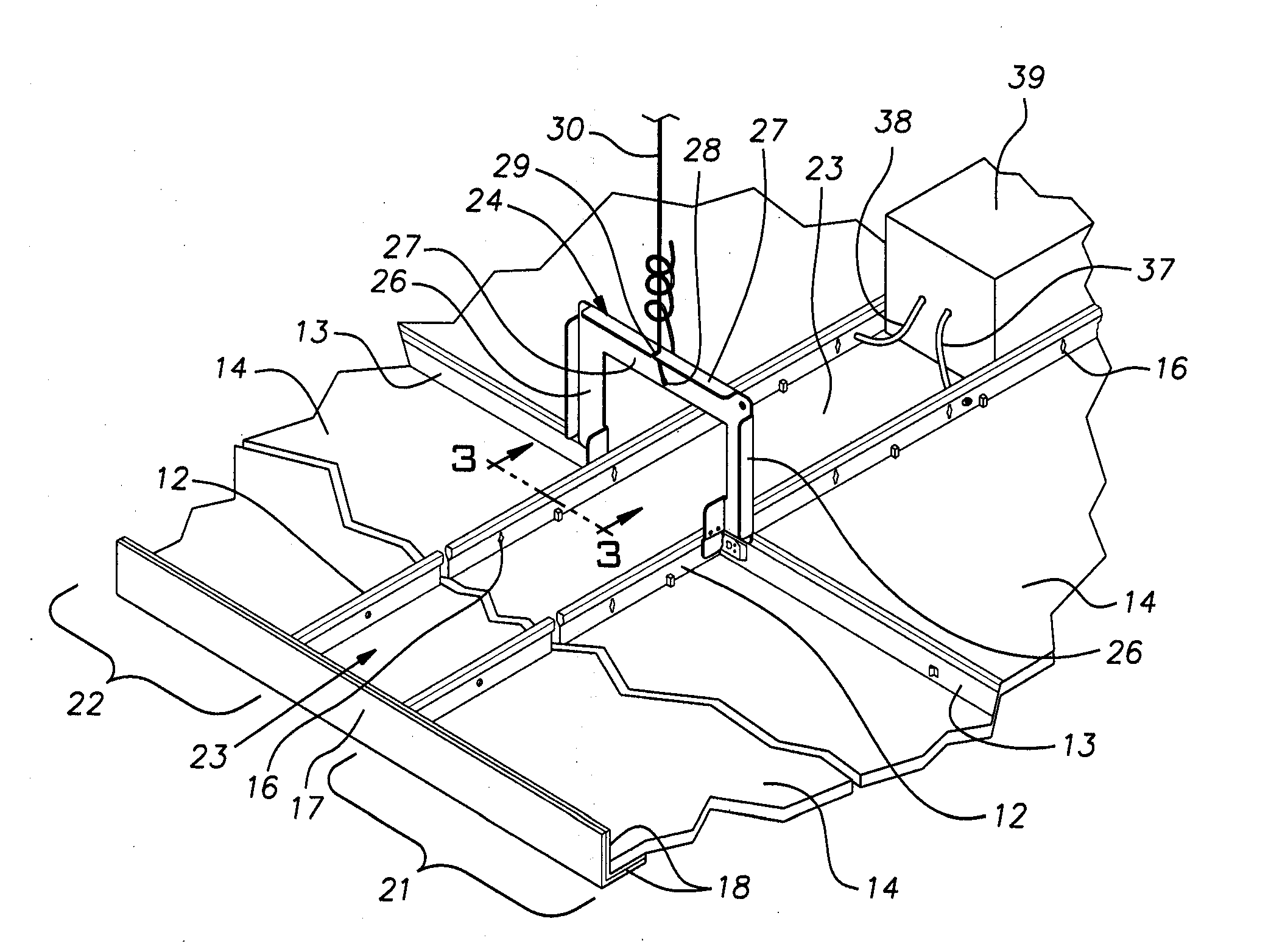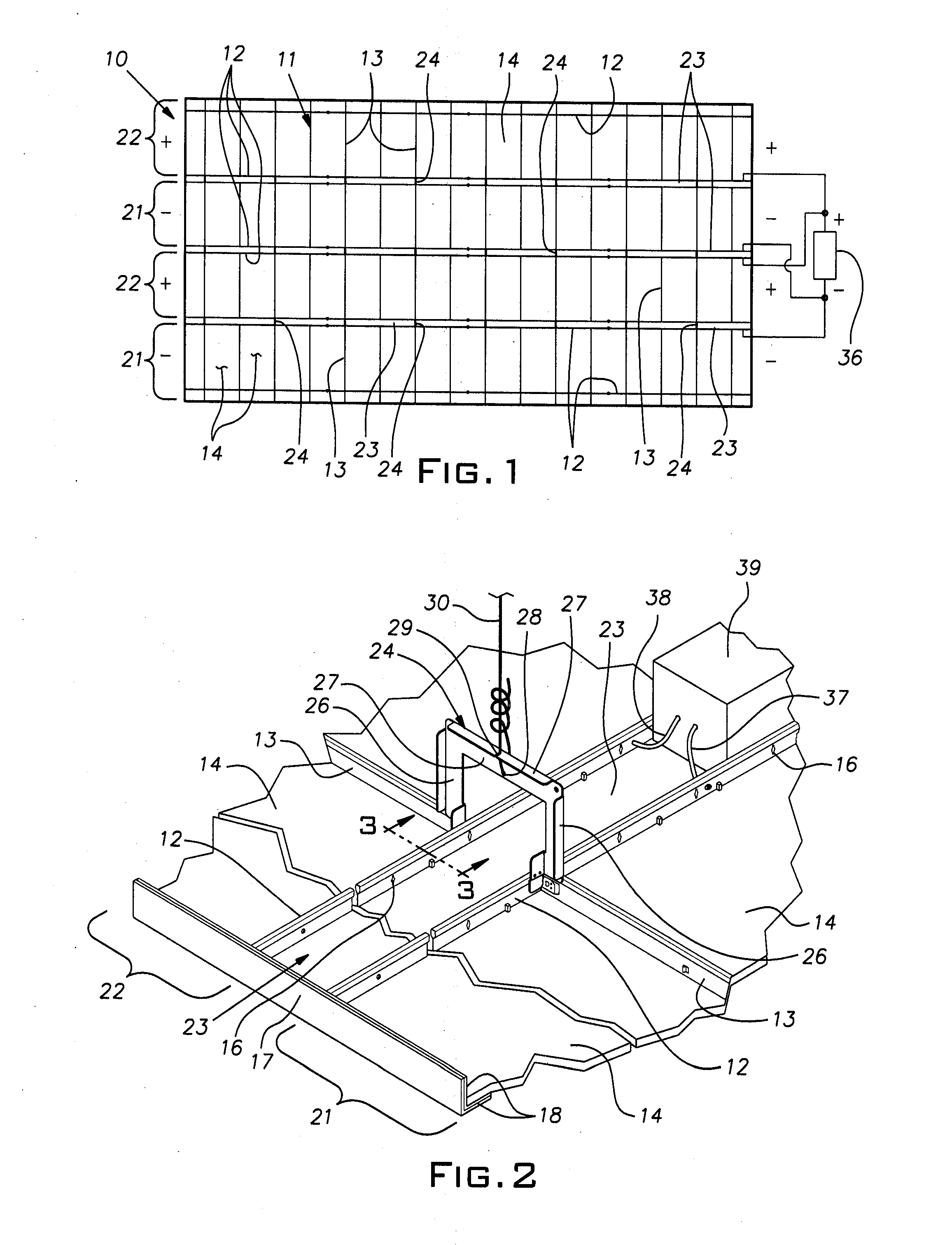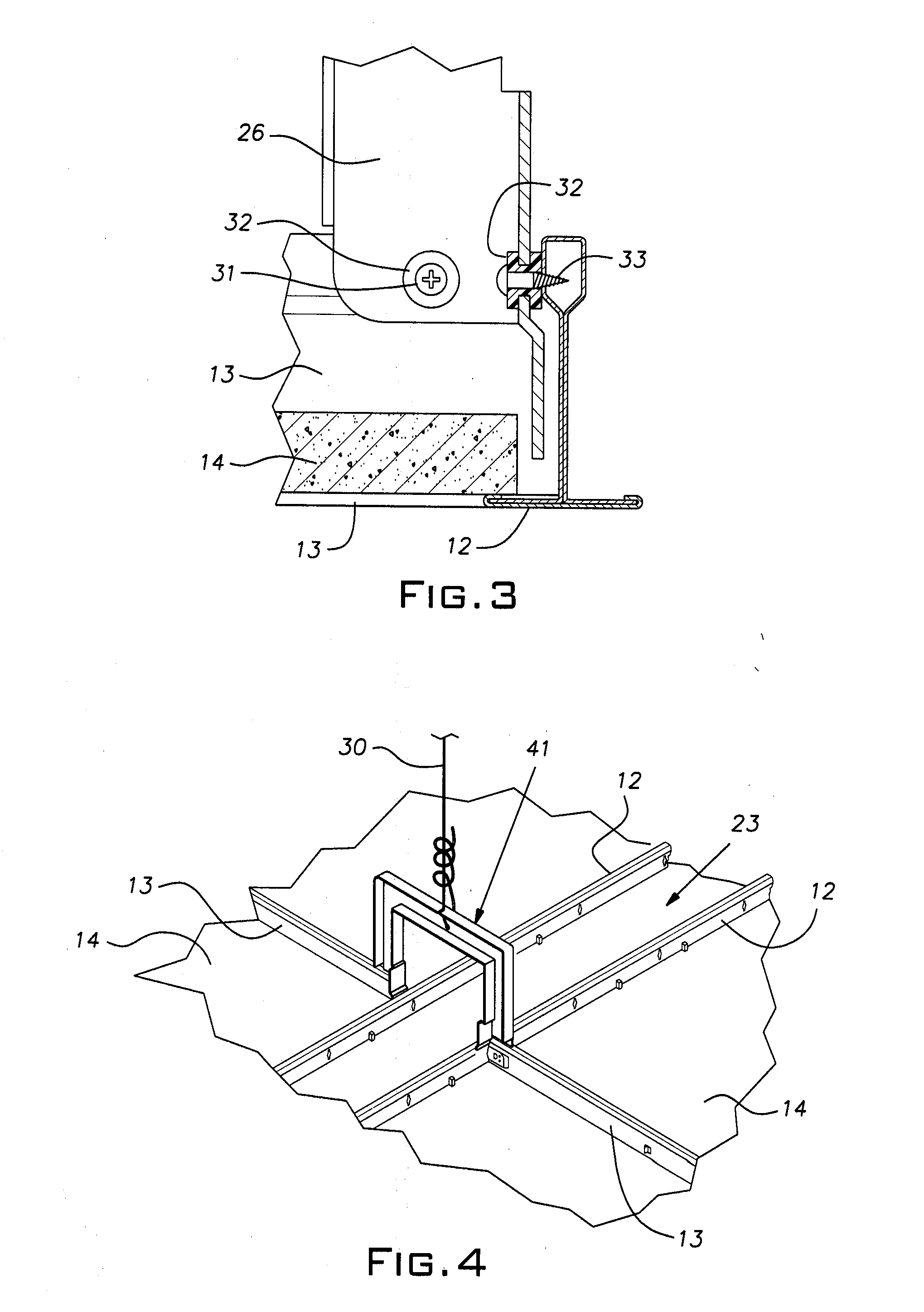Directly electrified ceiling grid
a ceiling grid and direct electrification technology, applied in the direction of ceilings, walls, building components, etc., can solve the problems of increasing the consumption of low voltage electrical power, inefficient transforming the relatively high voltage ac utility, and consuming appreciable electric power in a standby mod
- Summary
- Abstract
- Description
- Claims
- Application Information
AI Technical Summary
Benefits of technology
Problems solved by technology
Method used
Image
Examples
Embodiment Construction
[0012]FIG. 1 illustrates an example of a suspended ceiling 10 constructed with generally conventional components. The ceiling 10 comprises a rectangular grid system 11 of main runners or tees 12 and cross runners or tees 13 on which are carried ceiling tiles or panels 14. The grid runners or tees are in the form of inverted tees most commonly made of roll-formed sheet steel, galvanized and / or painted for corrosion resistance. The main tees 12 can be 10 or 12 feet long (or metric equivalent), and joined end-to-end to extend the length of the desired ceiling area. U.S. Pat. No. 6,729,100 discloses an example of an end connector suitable for joining the ends of conventional main tees 12. Cross tees 13 are typically 4′ or 2′ long (or metric equivalent) and are joined end-to-end by connectors such as shown in U.S. Pat. No. 5,761,868. The ceiling panels 14 can be of any known construction either non-metallic and, therefore, non-conducting, or made of metal sheet stock and, therefore condu...
PUM
 Login to View More
Login to View More Abstract
Description
Claims
Application Information
 Login to View More
Login to View More - R&D
- Intellectual Property
- Life Sciences
- Materials
- Tech Scout
- Unparalleled Data Quality
- Higher Quality Content
- 60% Fewer Hallucinations
Browse by: Latest US Patents, China's latest patents, Technical Efficacy Thesaurus, Application Domain, Technology Topic, Popular Technical Reports.
© 2025 PatSnap. All rights reserved.Legal|Privacy policy|Modern Slavery Act Transparency Statement|Sitemap|About US| Contact US: help@patsnap.com



